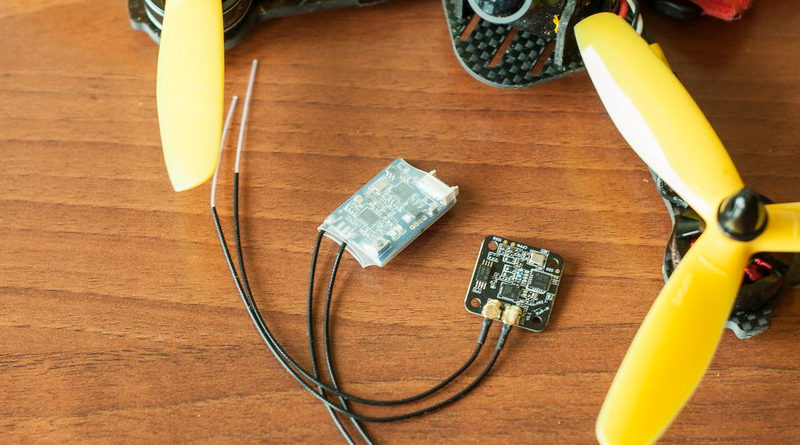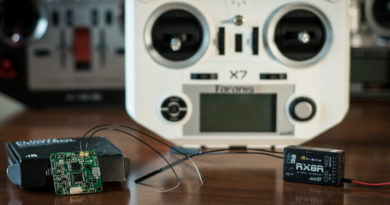New FrSKY XSR-M receiver V/S FrSKY XSR

For a long time FrSKY XSR receiver that featured S.PORT telemetry, good flight range, small size and light weight was the most preferred by racing quad and rc planes pilots. But FrSKY has finally decided to revise this receiver to satisfy all market demands. And today we would like to review the new XSR-M and compare it to the older XSR receiver.

FrSKY XSR-M technical specifications:
- Dimension: 20*20*4mm (L x W x H)
- Weight: 1.8g
- Number of Channels: 16Ch (1~16ch from SBUS channel, 1~8ch from CPPM channel)
- Operating Voltage Range: 4.0~10V
- Firmware Upgrade with S.PORT
- Antenna: 15cm
- Exposed antenna: 32.8mm
- Compatibility: FrSky X-series Module & radios in D16 mode

In the box:
XSR-M comes in a soft package with 4 wires plug and instruction manual.
Features:
- Smart Port
- S-BUS/CPPM output (BLUE LED indicates XSR-M in S-BUS mode, otherwise in CPPM mode)

The direct comparison to the older XSR receiver would show us the obvious differences:
- Length and width have been reduced: from 26×19.2mm to 20x20mm
- Weight has been reduced from 4.3g to 1.8g
- Antennas on XSR-M are detachable and have a connector
- Exposed part of the antennas are longer (32.8mm)
- Connection port has 4 wires on XSR-M (S.PORT, CPPM|SBUS, Vin, GND) instead of 5 on XSR (S.PORT, CPPM, SBUS, Vin, GND)
Enabling CPPM output instead of SBUS and vise-versa: long press the F/S button on the receiver for 3 seconds -> GREEN LED will flash three times indicating that the mode change is completed.
Points 3 and 4 are the most critical upgrades: first would make it much easier to change the antenna in case if it has been damaged (no soldering required) and second would aid to resolve the issue that older XSR had less flying range due to shorter exposed antenna area comparing to X4R receivers. XSR-M has the longer exposed part and might improve the range. I have tested both receivers on the ground and found that there are changes….. Both of my receivers work perfectly in terms of range at the open space… But situation changes in the surroundings with some numerous obstacles… All tests are at the end of this review. Let’s move along with the features for now.

The size of XSR-M became more convenient — this receiver would now easily fit into most of the frames and in very tiny places. Weight decrease would help those pilots who are constantly fighting for the lightest setups This new receiver might now fit such smaller builds as 80-110mm frames!

The rest of the features are the same: XSR-M board has dedicated RSSI and CPPM pads (besides output pins), bind button and status leds. Moreover, the board now has mounting holes at the corners (21x21mm).

Testing and final word:
XSR-M definitely an upgrade for XSR receiver especially if it would be used for racing quads. Lighter, smaller, antennas are easy to swap, should have a slightly improved range, full telemetry support… all of those features make it superior to older XSR version.
I’ve tried to do ground and flight tests and compare XSR to XSR-M receivers in terms of range and I’ve found some significant difference: they both seem to work fine and deliver >1km at the open space. However, XSR-M RSSI figures were 2 — 10 RSSI points higher at all times than on XSR at the same locations and when there are a lot of obstacles are one massive obstacle. So, XSR-M is capable of delivering longer range in saturated environment.
What really stand out when using XSR-M is how easy it is to fit into the board. So, I think that I would finally end up with ordering only XSR-M for the future builds.



